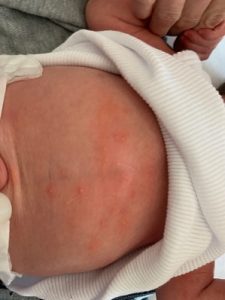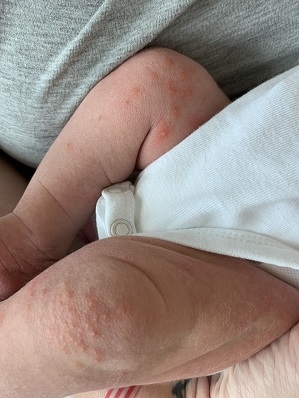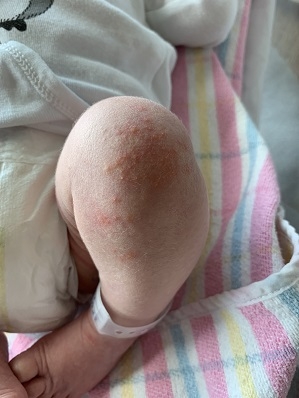
Newborn rash is one of the most common concerns that we as paediatricians get to review on the hospital ward. Today I am going to write about the commonest type of rash we see in newborns, the erythema toxicum, also known as erythema toxicum neonatorum or toxic erythema of the newborn. The name of the rash is a really good tongue twister. Whenever I mention it to first time parents, most would look at me really concerned. Rest assure, despite having the word ‘toxic’ embedded in its name and sounding super scientific, the rash is actually benign in nature and not harmful at all.
What does erythema toxicum look like?
Erythema toxicum rash can appear from day two to 14 of life as small, reddish pimply-like lesions. They can be hard when you touch them and can sometimes look like they have whitish or yellowish pus inside. These pimply lesions are usually surrounded by a distinctive diffuse, blotchy, redness margin. They normally start in the face then move to torso, arms and legs, but never on the palms and soles of the hands. Usual peak appearance is around day three and four of life. The rash can come and go within minutes, hours or days but rarely lasts for more than two weeks. It typically disappears without any intervention and doesn’t cause ongoing issues. The rash is not contagious.
Who does erythema toxicum effect?
The rash can affect any newborn infant; it doesn’t distinguish race or gender. It is more common in full-term newborn infants than in infants born prematurely though. The underlying cause is unknown.
Diagnosis of erythema toxicum
Diagnosis of erythema toxicum is usually made on clinical ground and the infant would need to be clinically well otherwise. Lethargic looking and feverish newborns (temperatures above 38 degrees) with rash would need further assessment and investigation to ensure that their rash is not due to infective causes.
If you feel you require paediatric advice for your child please contact us.
For more qualified, easy-to-understand specialist paediatric information visit Paedicare’s blog.



